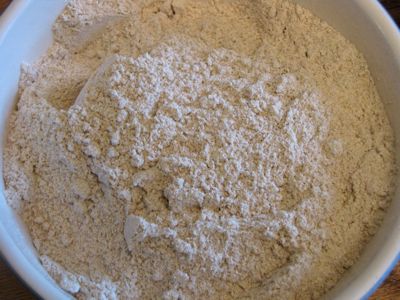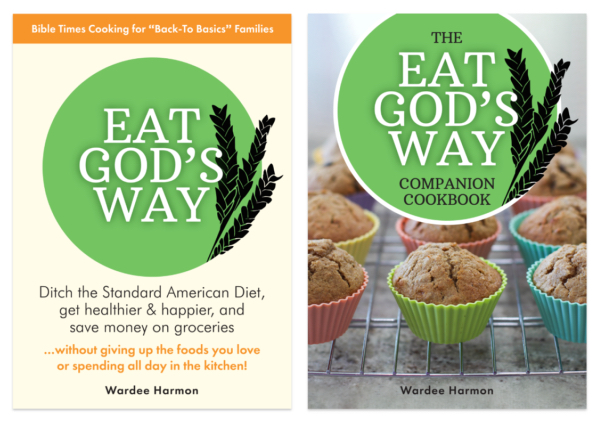RFNH = “Real Food Nutrition & Health” Study. My children and I will be working our way through Kristen Michaelis’ book, Real Food Nutrition and Health, during the fall and winter months as part of our homeschooling curriculum — and it looks like many of you will be joining us!
Click here to read more about the study and get the proposed schedule, as well as current and past downloadable discussion questions/activities each week — which you can save for the future if you’re not going to participate now.
Welcome to the first discussion for Real Food Health and Nutrition, the first real food nutrition text for school-age children. My kids and I really enjoyed reading chapter 1, and then discussing it using these discussion questions/activities (a free PDF download).
This chapter makes a distinction between nutritionism and whole foods. Where nutritionism proposes that the scientifically identified nutrients in food (such as beta-carotene) give foods their nutritional value, we lovers of whole foods know and appreciate that nutrients don’t work in isolation — God created foods with a whole host of nutrients and component which work better together to offer nutrition and sustenance.
I was really happy that each of the kids, in their own way, showed their belief and understanding that whole foods are designed by God to offer perfect nutrition. Where nutritionism and food scientists would isolate nutrients, or create fake foods that are then fortified by nutrients, my children appreciate the beauty, taste and perfection of naturally-grown and traditionally-prepared bread, butter, apples, carrots, and eggs.
The kids were shocked about three things.
1. To learn the bad rap that foods get over the years. They laughed out loud hearing how butter was demonized because of a false belief it led to heart disease. It was replaced by trans-fat margarines, which turned out to be huge factors in heart disease. Oh, the irony.
2. To hear the statistics of how many more calories are eaten today, in the form of fake foods — and how much money the food industry stands to lose if we reset calories back to 1950 levels.
” …for every 100 calorie reduction in the American diet, industrial food companies will lose over $30 billion dollars per year. If we were to reset calories at 1950 levels, industrial food would lose over a quarter trillion dollars every year.”
3. To learn how deceptive food marketing campaigns are. Even though we aren’t in the grocery stores often, they have seen enough for light bulbs to go on in their heads. Labels like: “Zero trans fats” or “Added Calcium” or “Low-fat” begin to make sense!
On my end, I have been doing some thinking of my own. This chapter made the point (very well) that the food industry demonizes certain foods, usually to make a profit on something fake they’re making that is supposed to be better than God’s design. Just how is that possible, by the way? I’ve been thinking that we are all susceptible to this.
For instance, I have noticed that grains are being demonized lately. Now, don’t get me wrong. I’m not saying that cutting back on grains can’t be helpful for weight loss. I’m also not saying that people should ignore gluten or wheat intolerances.

As a mom of a daughter with gluten intolerance, I know full well that gluten can cause great digestive distress, among other symptoms. As someone who has been working on losing weight since the beginning of the year, I know that keeping my grains lower is helpful for that goal.
I realize that are varied reasons to avoid grains, including diabetes, weight loss, and gluten intolerance or allergy. Keep those in mind, but step back a minute. Recognize that God created grains, gave them to us for our consumption, and even uplifts grains in His word over and over and over.
Why the health issues then? I would argue that it is not because grains are evil or not intended for human consumption. It is more likely because of other things that are out of balance, such as:
- modern strains of wheat bred for high performance (higher amounts of gluten)
- quick preparation of grains, rather than traditional souring or sprouting
- a diet lacking a variety of grains (modern wheat is pretty much all we know)
- a diet that is out of whack in other areas (lacking probiotics, high sugar, wrong fats, mineral deficiencies)
Once again, please understand that I’m not saying if you have celiac disease that I believe you should eat gluten. 🙂
I’m being honest — this attitude against grains bugs me. Let’s not demonize a food created by God — instead let’s look for other reasons why our bodies are not handling that food very well.
So… that’s what Chapter 1 brought out in my family! What about you? Have you had a chance to read Chapter 1 with your children? Have you gone through the discussion questions, either mine or your own? In the comments below, please share what questions and remarks were exchanged by you and your children.
My daughters have both blogged about this chapter and what they learned. A.’s post is here, and B.’s post is here. They both welcome your children to visit their blogs and continue their discussions.
Grab the discussion questions for Chapter 2: CLICK HERE. Come back on Friday, September 3, to discuss that interesting chapter! It is not very long, but quite fascinating.
GNOWFGLINS will earn a commission on sales of the Real Food Nutrition and Health book through this blog. But honestly, we’d be doing this study whether or not we were associated. Thank you for supporting GNOWFGLINS with your purchase. You should also know I’m very thankful to be undertaking this study with Kristen’s permission.
...without giving up the foods you love or spending all day in the kitchen!

2 free books:
Eat God's Way
Ditch the Standard American Diet, get healthier & happier, and save money on groceries...
We only recommend products and services we wholeheartedly endorse. This post may contain special links through which we earn a small commission if you make a purchase (though your price is the same).



For me the verdict is out on grains. Still…you may want to check out “The Heart Scan Blog”. A little while ago he had a very interesting discussion on wheat. He compared the varieties grown today with those our ancestors most likely ate. Perhaps the issue is less eating the grains, but more which ones we’re eating. Perhaps we need to be ever more traditional – at the very least when it comes to wheat specifically.
Good thoughts, mamaraby! That’s exactly one of the things I was pointing out. I have visited that blog before, even those experiences with emmer and einkorn. He tried emmer and einkorn (both old varieties of wheat), and that was interesting. However, I believe he misses the boat when he subs out ingredients but keeps methods the same; he used a quick commercial yeast bread recipe. Wouldn’t it be wonderful if people would do this investigation with a traditional method of grain preparation such as souring or sprouting?
I’m glad you are speaking up for grains, if prepared properly. I think years of white bread, white sugar, etc did a number on my body, but now that I’m avoiding those “foods,” I’m finding I can eat just about any whole food I want to. DH has some food sensitivities (dairy, eggs, and wheat) that we are hoping he will heal from.
Adding in a probiotic capsule in addition to plain, whole milk yogurt (purchased, not homemade) has made a big difference too.
I just made the 5-minute artisan sourdough english muffins for lunch. We loved them!
Christie — I would agree with that. Years of poor diet leave people in poor condition and can lead to allergies and intolerances. In our family, we have seen my son’s egg allergy fade when our diet became nourishing.
This year — for the first time in my life — I have not had seasonal allergies. Totally shocked me, because I was expecting to be out of commission and/or on antihistamines for three months of late spring to early summer. Just to function, I’ve had to do that for many years.
But it turned out that I was fine this year, even when loading and unloading hay (the worst)! I credit two things for this turnaround; I can’t narrow it further — taking bee pollen sporadically just before allergy season and eating probiotic rich foods, practically at every meal, for a year prior.
I will hope that you and your husband continue to see improvement in your sensitivities! Glad you enjoyed the 5-minute English muffins. 🙂
My daughter (8th grade) and I read through it. We really took our time to try and understand the definitions of nutrients and nutritionism. It’s a little confusing to her, but I think she gets it. We understand that it’s the whole food that is beneficial to us, not just the individual nutrients in the foods. Food science and labs cannot improve on what was already perfectly created for us to consume. We didn’t get a chance to do an activity with this chapter, but I am looking forward to doing more hands on fun stuff in future chapters.
Overall I really like how the book is written so far. Autumn was so receptive to it and I believe just happy that we are doing something together. Which makes me a happy mother. 😉 Thanks Wardee for the inspiration to do this. You have been a blessing in my life.
Tara — You’re just a gem. We had to take time to really digest the idea of nutritionism. Its actually not bad to know what nutrients are in food, just that the individual nutrients don’t trump the whole — not to mention that we’ll never know this side of Heaven what all is in our food!
I enjoy Kristen’s writing so far, too. I have found myself making it a little more simple for the sake of C., who’s 9. I think he’s getting it, though. We have to stop and talk every few paragraphs just so I can make sure the ideas are sinking in.
I’m glad you and Autumn are joining us!
I have downloaded and just finished reading ch. 1 with my 2 boys Cory 11, and Kyle, 9 and doing the discussion questions. The main thing that stuck out for Cory was an example I used talking about how producers now can change food from the inside out as was mentioned with the tomato example, and I told of a recent story from a local cashier who said that they were selling square watermelons for $150 each and then we got to talking about GMO’s and how even the foundation of food can be changed. And for Kyle, he liked the ‘irony’ in the margarine story. I myself LOVED it and loved having something I am PASSIONATE about to share in an organized fashion with my boys!! Many thank yous!!
Shelley — Welcome! So is the square watermelon for real? My goodness! The food scientists are busy, aren’t they? Your boys are about the same age as my son; it is encouraging to me that they’re joining us. I think the younger kids can get alot out of this study, even if it is written for high schoolers.
Actually square watermelons are exported from 3rd world countries and they are grown inside jars to make them that shape. They are not GMO.. I was watching a tv show about them with the kids a while back, and we thought it would be cool sometime to try it! WHen teh watermelon starts to form, the farmer comes along and puts it gently inside a square glass jar.. it grows to be the shape of the jar, when it’s ripe they carefully break the jar off, and you have a square watermelon.. but on the downside, since they come from other countries.. not only are they expensive, but who know how OLD they are!!
Everyone — I am late with the discussion questions for Chapter 2! They’ll be up my Monday morning, Lord willing. 🙂
I am catching up here…the girls already commented on A. and B.’s site and are very excited to comment again. They keep checking back a couple times a day. I found too that it was a bit confusing for Abbie, so our discussion goes a bit longer but that is good! She is especially interested in learning about it and it is a great learning time for us all. One activity that I had them do is to look at products and write down some things that the manufacturer uses to try to sell the product. Here are some things they found:
Margarine- “Real Spread” No trans fats
Cup of Soup- 90 calories
Nesquick- 100mg MORE CALCIUM than milk alone to help build strong bones.
Cereal- Provides 7 essential vitamins and minerals, high in folic acid,
potato chips- All natural
Peanut butter- excellent source of Omega-3
salad dressing- No artificial preservatives
They were able to identify an item as not a true whole food by they way the manufacturer tries to sell it.
Toni — Such a great idea for an activity! I love what your kids came up with. Thank you to your girls for participating at my daughters’ blogs. They were tickled!
I have learned quite a lot in this book and I’ve only read 2 chapters. I think it’s interesting how Food Industries would lose $30 billion dollars for every 300 calories reduction in the american diet. I also find it interesting that these industries make so much money off of american’s diets.